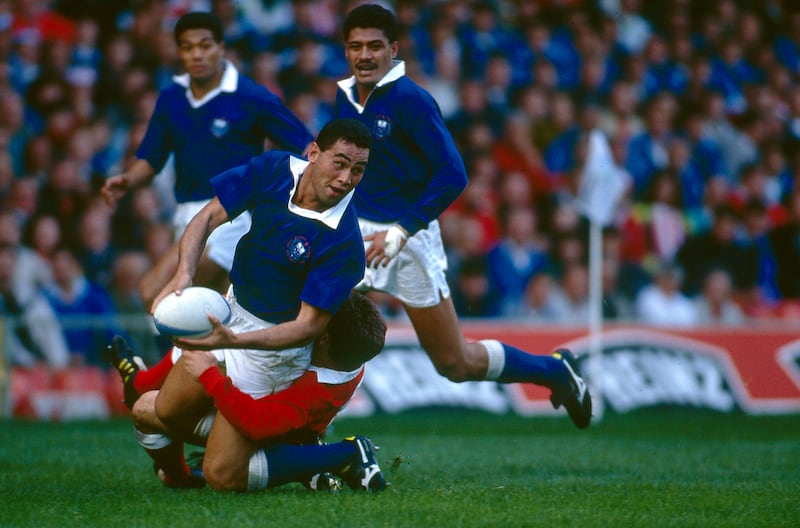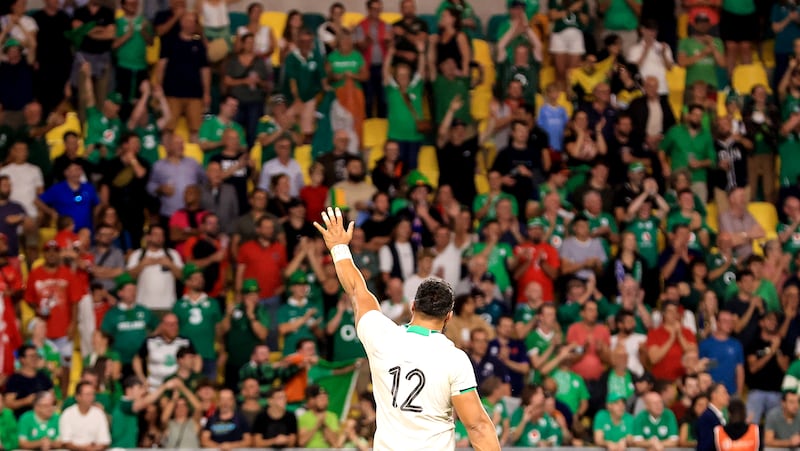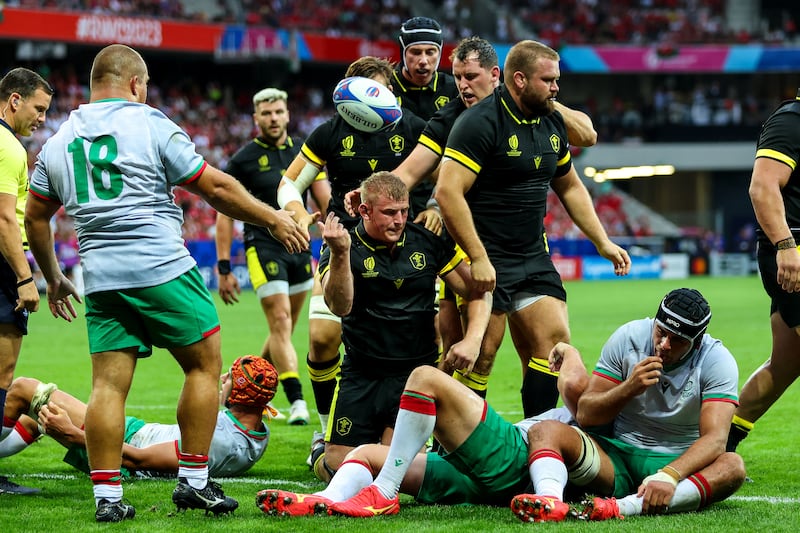The Rugby World Cup has always been populated with teams who are over-matched and stretched beyond their means. Through the decades, one-sided games were the flour in the soup, added not for flavour or nutrition, but for volume. Everyone knew the score.
It is such an intrinsic part of the tournament that it is never greeted with outrage or even exasperation. Imagine if the football World Cup was littered with 8-0 and 9-0 hammerings? For a start the sponsors and the television companies would be up in arms, putting the heart across the nabobs in Fifa.
The Rugby World Cup is the Downton Abbey of sport, a pretty window into a stratified society, where the wealth is concentrated among the elites and privilege trumps everything. The tournament revolves around the game’s traditional powers. Nobody expects an underdog story. It is not how the Test game is wired to behave.
The World Cup has always reflected the game’s age-old hierarchies. It is ingrained in its identity. At the very first tournament in 1987 more than half of the teams played by invitation. The International Rugby Football Board [IRFB] entertained just eight members at the time and the World Cup was their gig.
The Counter Ruck: the rugby newsletter from The Irish Times
Matt Williams: Ireland must avoid arrogance and pay England the respect they deserve
Owen Doyle: Give the scrum back its purpose or risk damaging the Six Nations - and Australia’s regeneration
Matt Williams: Stopping great teams from playing the way they can play is exceptionally difficult
Ireland, Scotland and Wales were the founder members in 1886, with England joining a couple of years later. Astonishingly, nobody else was admitted until Australia, New Zealand and South Africa were made full members after the second World War, 59 years later; France weren’t granted full membership until 1978. It was an old-boys club, exclusive and self-absorbed.
The pattern for whippings was established immediately. In half of the games in the pool stages of the 1987 World Cup one team scored 40 points or more, at a time when tries were worth only four points. In games between IRFB members and their invited guests, the average winning margin was 37 points.

Over the years some things changed. From the 1991 tournament onwards a World Cup qualification system was put in place for countries outside the elite. Western Samoa, for example, who had been inexplicitly snubbed in 1987, came storming through four years later and beat Wales in Cardiff – causing one of the greatest shocks in the tournament’s history, from a very shortlist, admittedly.
The IRFB morphed into the IRB and then World Rugby, and along the way it became a more outward-looking organisation, welcoming scores of new members from around the globe. But the screaming gaps in standards that were exposed at every World Cup never developed into a source of anguish or urgent action. Plucky performances were greeted with pats on the head, but everybody knew their place.
So, the beatings continued. New Zealand scored 101 points against Italy at the 1991 World Cup – when Italy were still a tier two nation – and England scored 101 points against Tonga; Australia put 145 points on Japan at the 1995 tournament and 142 points on Namibia eight years later; at the same World Cup England hit Uruguay for 111.
The more grotesque winning scores have been toned down over time, but the environmental factors remained largely the same. The marginalised nations in the world game were set up to fail.
In the history of the Rugby World Cup, how many shock results have there been? In 185 tournament matches between tier one nations and others from outside the elite – from 1987 to 2019 – tier one teams have lost just seven times.

At the 2019 World Cup the hosts Japan torpedoed Ireland and Scotland – two scalps from the game’s protected elite – but in 21 other games between tier one nations and those from lower tiers at that tournament, the average winning margin was 33 points. Even allowing for tries now being worth five points, and a general inflation in scoring, depressingly little had changed between the first World Cup and the ninth World Cup.
So, Romania, playing in their eighth tournament, lose to Ireland by 82-8 on the opening weekend of this year’s World Cup, 20 years after they lost to Australia by 90-8, and everyone just shrugs.
Since the last World Cup Romania had played just one match against a tier one nation. Before they rattled France’s second string with a stirring performance on Thursday evening, Uruguay had not encountered a tier one team since they lost to Wales in their final pool game four years ago.
Portugal were terrific against a diluted Welsh team on Saturday, but they didn’t have the field craft or the experience or the capacity to execute under pressure in order to turn a fighting chance into a famous victory. Where would they have acquired that facility?
When Samoa nearly embarrassed Ireland in their last warm-up game before the World Cup it was just their second match against tier one opposition since the last tournament. Without regular, committed exposure to the best Test nations, how are these teams supposed to improve? How many of the tier one teams are prepared to consistently sacrifice a lucrative November slot to accommodate a commercially flaccid game against a team from outside the top tier?
Instead, we pat them on the head at the World Cup.

When plans were announced earlier this year for a biennial tournament, involving all 10 of the tier one nations, plus two others (probably Fiji and Japan), the tier two nations were infuriated. The tournament would consume the July and November international windows, eliminating any slim chance of a Test match against one of the game’s elite in those years.
Promotion and relegation was promised for the second running of the tournament, which, under the current proposals, won’t be until 2030. In the meantime, the best tier two nations will rock up at another World Cup, under-resourced and undercooked, fighting desperately to finish third in their pool so that they can avoid a qualification process for the next tournament. It is a self-perpetuating cycle. The odds are stacked.
The hype around the Rugby World Cup has grown exponentially since the first event 36 years ago. World Rugby claims that its global fan base has grown to 405 million, although how this figure was reached is unclear. Ticket sales for this World Cup in France have been remarkable, even for games where there is no mystery about the outcome. In the pool stages, that typically amounts to about 60 per cent of the matches.
Everybody shrugs. This is the World Cup. What did you expect?
















